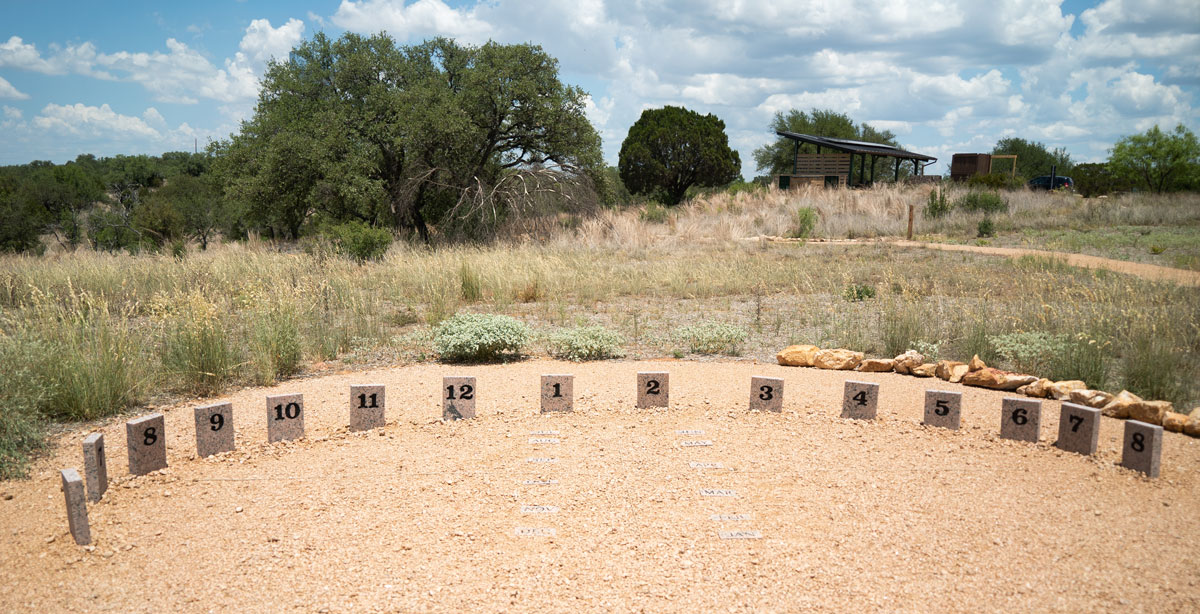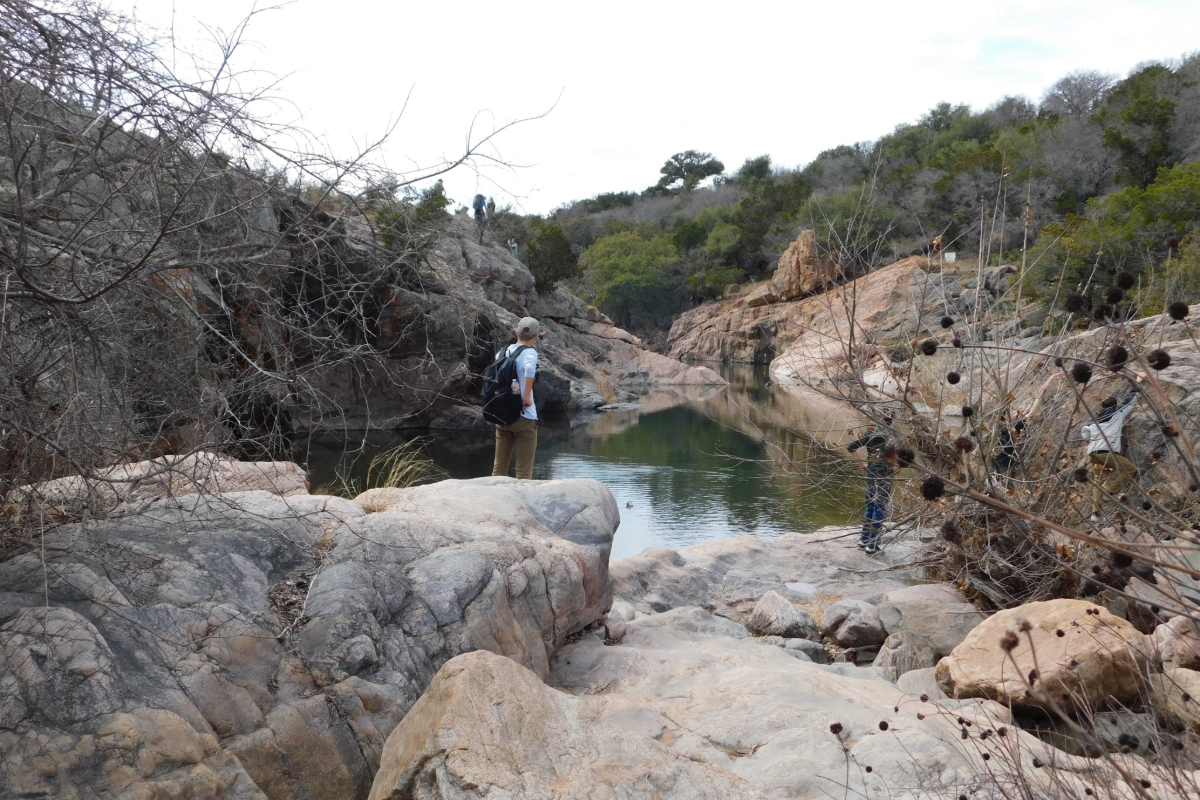
The observation deck at Horseshoe Bay Nature Park provides an overlook for visitors and a wide view of the park. With the right lens, you could capture some great photos from this vantage point. The shade it offers in the summer isn’t bad either. Staff photo by Dakota Morrissiey
Horseshoe Bay Nature Park is an 11-acre piece of recovering Texas Hill Country habitat. Walking through the park, it’s obvious an immense amount of consideration, love, and time was invested into the development of this miniature Highland Lakes preserve.
At first glance, the park appears simple and well-made. The matching construction, hidden trash cans and bathroom, and minimalist design all contribute to the natural aesthetic. A shaded observation deck offers an overlook that reveals the sloping gradients of the entire preserve.
Clear maps, trail markers, water fountains, informative signage, and benches seem to be placed in perfect locations throughout the trail system. A half-mile loop winds through the park and gentle foot paths meander into hidden alcoves.

For all of the development in the park, the habitat itself is almost totally untouched, and that is by design.
“It’s restoring the land back to its native state,” said Vicki Adcock, a Highland Lakes Master Naturalist and member of the Horseshoe Bay Nature Park Board of Directors.
Eight eco-regions exist in the park, each with its own micro-ecology that can only develop if left alone. Very little mowing is done at the preserve, trees aren’t trimmed, and invasive plants are removed when discovered.
As I made my way through the park, I was taken with the vitality present every step of the way. Even in the dead of summer, the plant life was more vibrant and varied than I was used to seeing. Silverleaf nightshade bloomed along the loop and Texas plume peeked out from the granite. Small trees emerged from swaying grasses that would normally be cropped short from mowing or cattle.

When designing Horseshoe Bay Nature Park, even the rocks and earthwork were given extensive consideration. Only granite and river rock are used on the paths and in the landscaping because they are naturally found in the area. The park has no paving, keeping the soil permeable so water can soak into the ground. Contour swells were built up to guide rainfall in gentle directions to prevent heavy erosion and runoff.
Every time I stopped to take a photo, it seemed like a bench had been placed in the exact spot needed to get the best angle. This, too, was by design. The park’s Board of Directors consulted with the National Audubon Society to find the best locations for benches, creating ideal observation points for birders.

Brushpiles are placed throughout the park to provide cover for small animals to escape predators. These would occur naturally, but they take time to form. The piles end up being wildlife hotspots as animals feel more comfortable with a safe place to hide nearby.
Dozens of species of birds can be seen at the park due to the untouched nature of the habitat. Trees like Texas persimmons and Ashe junipers are food sources that are usually absent when land is cleared for grazing or development. A small pond sits across a nearby fence line and attracts waterfowl when full.
Because there is little to no mowing, flowers are able to go to seed. This means that, when spring rolls around, more blooms will appear, attracting pollinators such as monarch butterflies and ruby-throated hummingbirds.
Nesting boxes for nesting birds, chimney towers for chimney swifts, and beehives for bees give shelter to animals that would otherwise be absent from the ecosystem.
While my stroll through Horseshoe Bay Nature Park was short and sweet, it was impressive. I can’t wait to return in the spring to see it in full bloom.
Horseshoe Bay Nature Park is located at 1514 Golden Nugget in Horseshoe Bay. Entrance is free. Find a park map and rules online.











